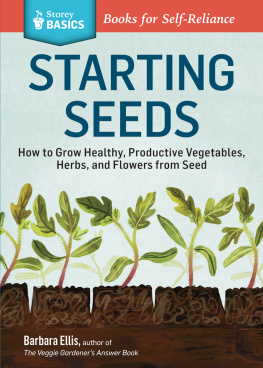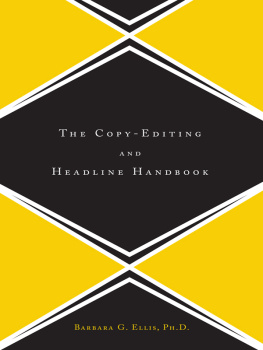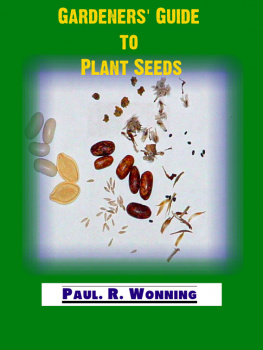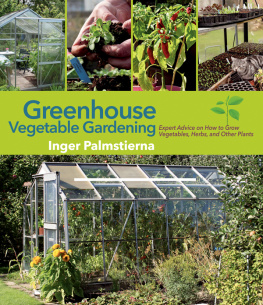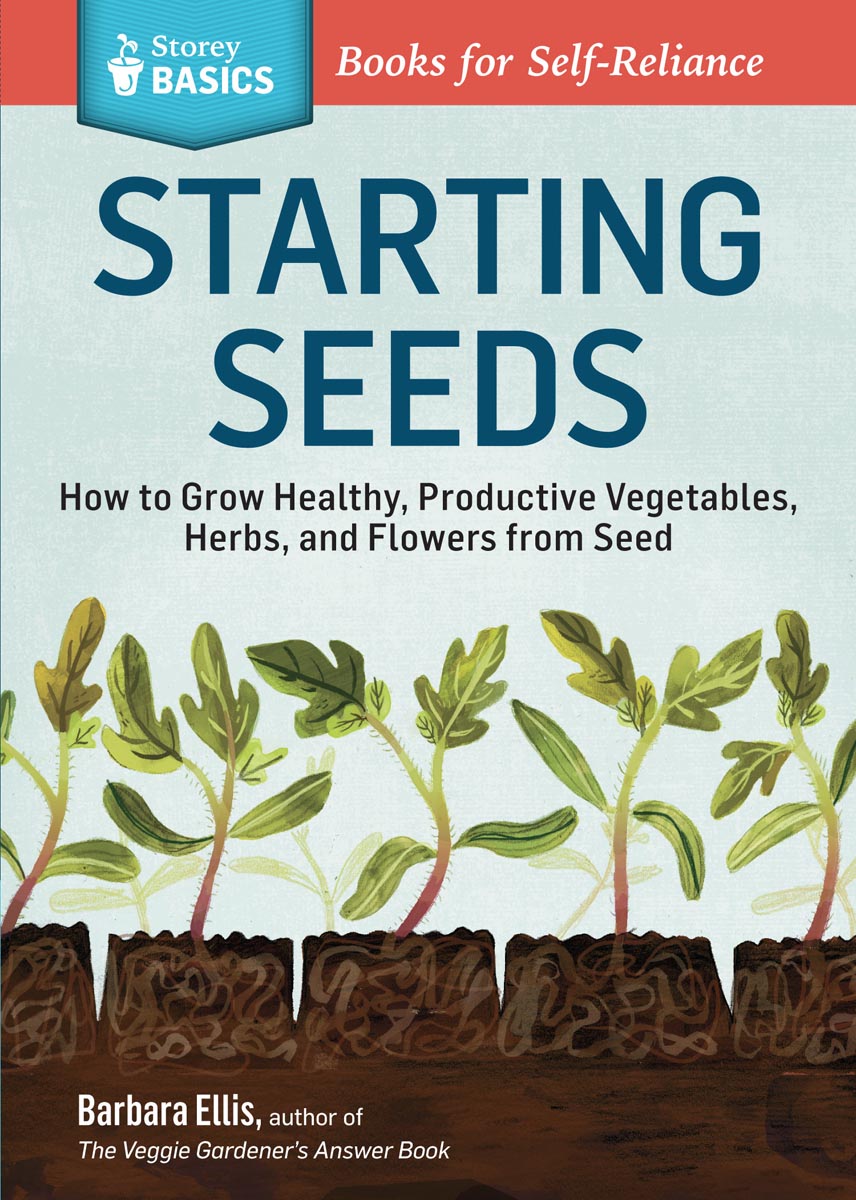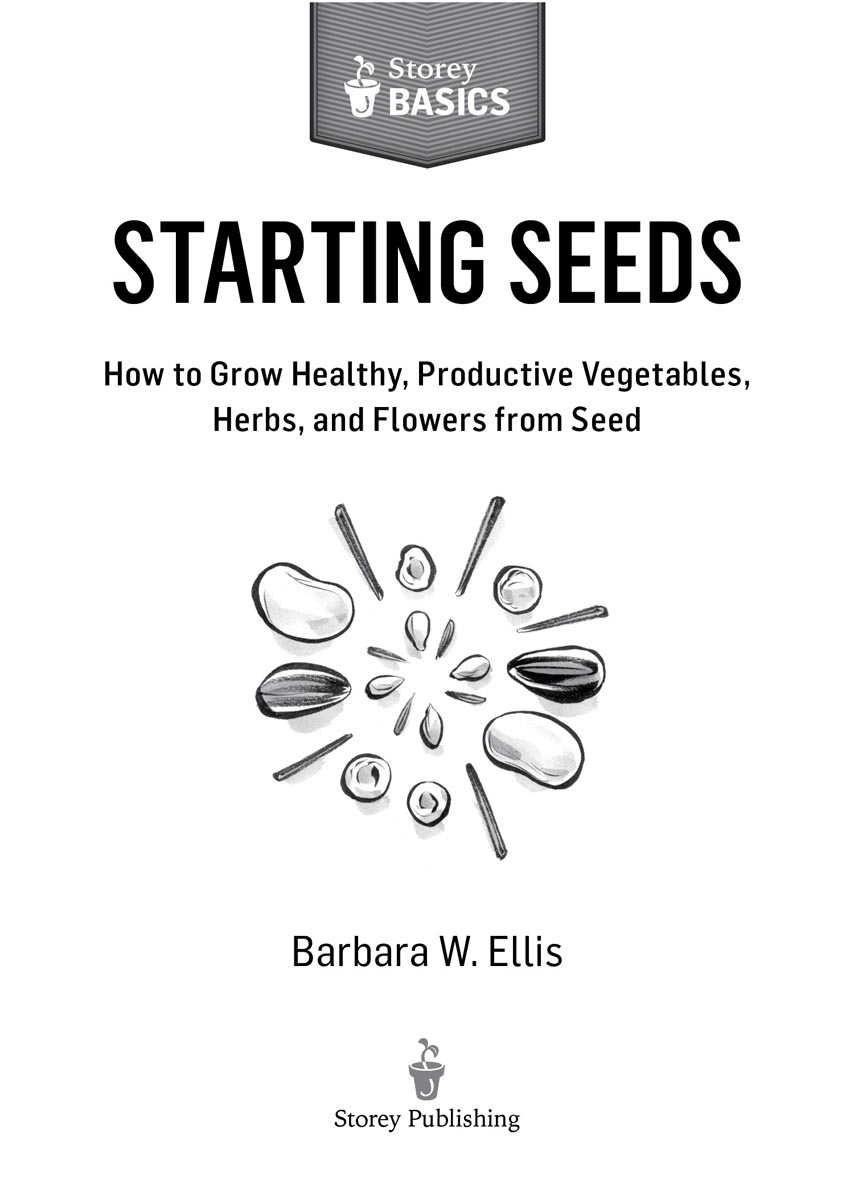The mission of Storey Publishing is to serve our customers by publishing practical information that encourages personal independence in harmony with the environment.
Edited by Carleen Madigan
Art direction by Jessica Armstrong
Text production by Theresa Wiscovitch
Cover illustration by Meg Hunt
Interior illustrations by Kagan McLeod
Ebook design by Dan O. Williams
Ebook production by Kristy L. Rustay
Indexed by Christine R. Lindemer, Boston Road Communications
2012 by Barbara W. Ellis
All rights reserved. No part of this book may be reproduced without written permission from the publisher, except by a reviewer who may quote brief passages or reproduce illustrations in a review with appropriate credits; nor may any part of this book be reproduced, stored in a retrieval system, or transmitted in any form or by any means electronic, mechanical, photocopying, recording, or other without written permission from the publisher.
The information in this book is true and complete to the best of our knowledge. All recommendations are made without guarantee on the part of the author or Storey Publishing. The author and publisher disclaim any liability in connection with the use of this information.
Storey books are available for special premium and promotional uses and for customized editions. For further information, please call 1-800-793-9396.
Storey Publishing
210 MASS MoCA Way
North Adams, MA 01247
Ebook version 1.0
January 9, 2013
www.storey.com
Contents
Introduction
The Magic of Seeds
Seed packets begin arriving at my house every year in midwinter. I gather them like trading cards: a couple from one source, a few from another. In addition to purchased packets, my annual collection also includes bundles of treasures from seed exchanges and envelopes from friends and fellow gardeners. When it comes time to turn them all into a garden, my bundle becomes more like a deck of playing cards, rather than the trading type. Timing and the rules of the game play major roles in transforming a batch of seed packets into a thriving garden.
Its important to remember that the seeds basically set the rules. The secret to starting them successfully is understanding what they need to grow. Successful gardeners arent playing a game of 52 Pickup, though, where cards are flung in the air to land randomly and be picked up as quickly as possible. Instead, think games like bridge or canasta, where patience, system, and strategy are key.
Fortunately, seed sowing is easy to learn. Success is simple once you understand a few basic principles, such as what seeds need to sprout and how to schedule sowing so plants are ready to go into the garden once the weather and you are ready for them.
Seed Starting Basics provides all the information you need to turn a pile of seed packets into a successful garden. In it, youll learn easy ways to sow seeds and manage seedlings, indoors and out; how to select pots and potting mix; and how to develop a seed-sowing schedule that works for you and for your garden. This book also explains how to raise sturdy, healthy seedlings and get them off and growing in the garden.
Why Seeds?
Buying plants at the local garden center or big box store may be quick and easy, but these outlets only have room to offer a limited selection of plants. Starting from seeds lets you choose from the incredibly diverse selection of vegetables and flowers that are not readily available as plants. You can choose the best high-yielding hybrids, or unusual heirlooms your grandmother grew, or plants that will withstand your particular climate. Theres little doubt growing your own plants from seed will give you a sense of pride and accomplishment. Here are a few other reasons why starting plants from seeds makes sense:
- Save money! Growing plants from seeds is less expensive than buying the plants. Thats true even if you purchase basic tools and equipment highlighted in this book. If you already have the equipment, seeds are a lot less expensive than plants.
- Go organic. If safe, chemical-free food is one reason you garden, controlling your food from seed to table just makes sense.
- Experiment. Try the best new releases, a different transplant time, or plant a few vegetables youve never grown before all without spending much money.
- Set your own schedule. Garden centers and other outlets offer plants when most people are planting. To try a new schedule, plant extra early for a bigger harvest, or grow crops in tunnels over the winter, youll need to start your own from seeds.
- Sow where theyre to grow. Some vegetables and flowers simply resent being transplanted (see for more on this option.)
- Grow a gardener. By teaching a child how to sow seeds, you can grow gardeners as you plant. Children love fast-germinating seeds like bush beans, marigolds, zinnias, sunflowers, or morning glories.
- Start slowly. If youre a new gardener, start with just a few packets ideally a mix of some that can be sown outdoors where the plants are to grow, and a couple for indoor sowing. See Start with the Easy Ones on for more ideas.
Part 1
Getting Started
Many kinds of seeds sprout quickly and reliably without anything more than even moisture and light. This is especially true of annuals, but perennials, trees, shrubs, and vines can all be started from seed as well they just require a little extra patience. While seed-sowing takes some strategy and attention to detail, and specific germination requirements vary from plant to plant, the good news is that the basics are pretty much the same for all types of seeds.
In this section, youll find information on everything from choosing plants to buying seeds and using the information on seed packets. Youll learn how to figure out how many seeds to buy, how to test whether seeds are too old (if youve held onto them from previous seasons), and how to harvest and save your own seeds. Youll see how to develop a sowing and planting schedule that is adapted for your garden. In addition, youll find information on common problems and how to deal with them.
What Do You Want to Grow?
Twirling seed racks at a local garden center or pondering choices in catalogs or on websites is a fun way to get into seed starting. The gorgeous pictures on packets, coupled with the promise of new life inside, can be extremely seductive. Every possibility seems more attractive than the last. Even though packets only cost a few dollars each, its easy to quickly run up a tab. It simply makes sense to set parameters about what you want to grow before you stock up.
One step that greatly increases your chances of success is to take a hard look at your yard to see the exposure and other conditions plants growing there will be facing. Use this information to make a list of plants that grow best in the conditions naturally found in your yard sun, shade; poor soil or rich, for example. To identify possibilities, use the lists in this book, ask gardening friends, and search the Internet. Starting with a list of suitable plants greatly improves your chances of success, because you only have to help plants along, not fight the site at the same time. See Get to Know Your Garden on for tips on what to look for when evaluating your site. Here are some other considerations to help focus your choices.

